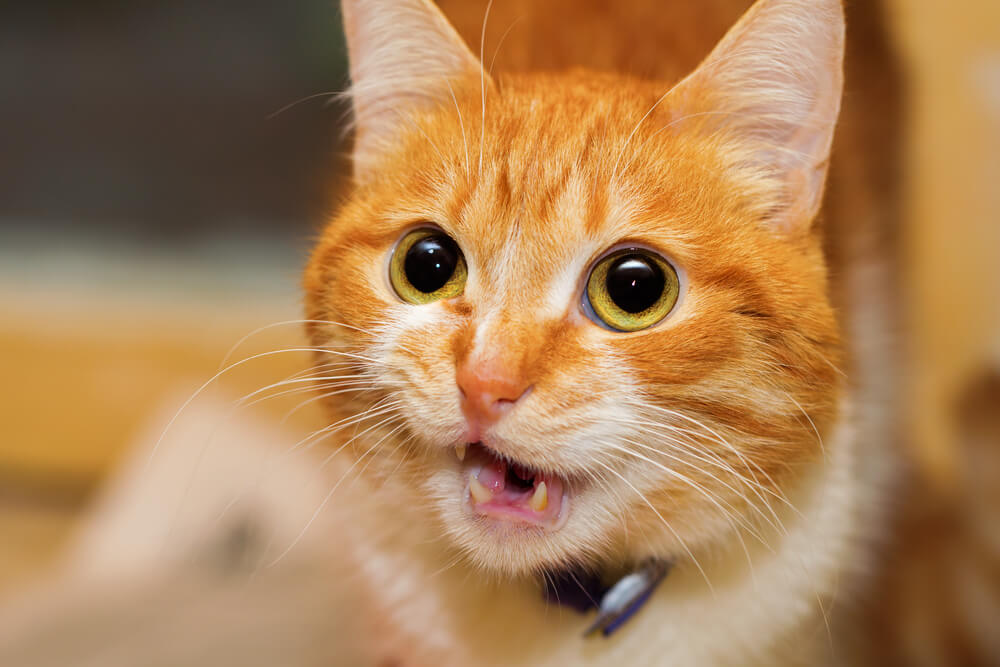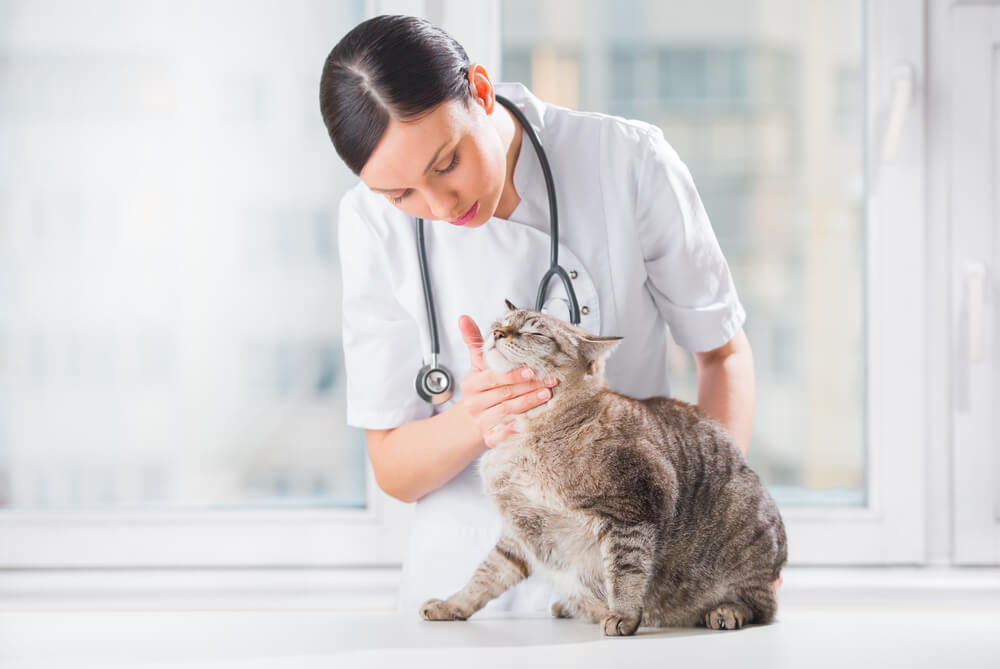Cats show many peculiar behaviors that we, as humans, find intriguing and sometimes puzzling. One such behavior is dribbling, also known as drooling, which can leave us wondering why our feline friends are producing excess saliva.
Understanding why do cats dribble can help us ensure their health and well-being. Sometimes, cat dribbling is a completely harmless and normal behavior.
It can be a sign of contentment, like when your cat is purring or kneading.
However, it could also be an indicator of a more serious issue, such as dental problems or sickness. Identifying the underlying cause of your cat’s dribbling is crucial in providing them with the appropriate care and treatment.
Key Takeaways
- Cat dribbling can be a normal or an indication of a health issue
- Identifying the cause is essential for appropriate care
- Dental problems and sickness are common reasons for cat dribbling
Why Do Cats Dribble?

When I think about cat dribble, it’s important to understand what causes it. While it may seem unusual at first, cat drool or saliva is a normal part of feline life, and various factors can contribute to this behavior.
One reason cats may drool is their grooming habits. Cats groom themselves extensively, which can stimulate their salivary glands and cause them to produce more saliva. This increased saliva production can result in normal drooling.
Another cause for cat dribble is their emotions. When cats are content and relaxed, their bodies can produce more saliva. As a result, you may notice your cat drooling while they are purring or being petted by you. This type of feline drooling is a normal response to feeling happy and relaxed.
In some cases, cat dribble can be a sign of discomfort or health issues.
For example, dental problems, such as gingivitis or tooth decay, can cause pain and inflammation in a cat’s mouth, leading to excessive production of saliva. Additionally, certain medical conditions, like kidney disease or respiratory infections, can also contribute to abnormal drooling in cats.
To identify any underlying health concerns, it’s essential to pay attention to any changes in your cat’s drooling habits. If you notice a sudden increase in the amount of cat dribble or suspect a health issue, it’s important to consult with a veterinarian for a proper assessment and diagnosis.
Cat dribble is normal and can be attributed to grooming, emotions, or various health conditions.
By keeping a close eye on your cat and monitoring their drooling behavior, you can ensure their well-being and address any potential issues early on—not just making sure they have a clean chin but also a healthy and happy life.
Common Causes of Cat Dribble

Stress and Anxiety
In my experience, stress and anxiety can make cats dribble. Drooling can be a response to feeling uneasy or fearful, especially in new or challenging situations. A cat might dribble when it goes to the vet, during thunderstorms, or when it encounters other animals.
It is essential to identify and address the sources of stress in your cat’s environment to prevent ongoing issues.
Dental and Mouth Problems
Cats can suffer from various dental and mouth issues that may cause them to drool. Gum disease, tartar buildup, dental diseases, and dental issues such as gingivitis, stomatitis, and ulcers can all lead to dribbling.
Tooth decay or broken teeth can also cause pain, leading to excessive salivation. It is important to check your cat’s oral health regularly and consult a veterinarian if any issues arise.
Ingestion of Poisonous Substances
Cats can dribble if they have ingested something toxic or poisonous. Substances such as certain plants, household cleaners, or human medications can trigger excessive drooling as a reaction to the toxins in their body.
If you suspect that your cat has ingested a poisonous substance, seek immediate veterinary attention. Keep dangerous items out of your cat’s reach to prevent accidental ingestion.
Health Issues
Various underlying health issues can cause cats to dribble. Problems like kidney disease, kidney failure, and even cancer can induce excessive salivation as a symptom. As a responsible cat owner, I recommend taking your cat to the vet regularly for check-ups.
Early diagnosis and treatment can help prevent significant health issues and improve your cat’s quality of life.
Indicators of Serious Conditions

In some cases, a cat’s dribbling could be a sign of more serious health issues. It’s essential for me to distinguish between normal, harmless dribbling and potential symptoms of an underlying condition.
When I notice my cat dribbling excessively, I should also look for other signs of discomfort or illness. If my cat is experiencing pain, they might become more vocal or show signs of aggression.
Further, nausea might cause them to drool more and have a reduced appetite.
I should also monitor my cat’s weight, as sudden weight loss may be an indicator of a serious health issue. An increase in their thirst levels could also be a red flag, suggesting there could be a problem related to their kidneys or urinary tract.
If my cat appears to be in distress, it’s crucial for me to consult my veterinarian.
Blood tests or blood work could provide valuable information about my cat’s overall health. By checking their blood count and chemistry, a veterinarian can identify any abnormalities that may be causing the excessive drooling.
If required, additional diagnostic work such as dental exams or X-rays might be necessary to pinpoint the cause of the issue.
While dribbling can be normal for cats, it is essential for me to stay vigilant and observe any accompanying symptoms that may indicate an underlying health issue.
Acting promptly and seeking professional advice can help ensure my cat receives the appropriate care they need.
Examination and Diagnosis

I believe it’s essential to take a visit to the veterinarian for a thorough check-up if your cat is dribbling excessively. As a confident, knowledgeable, and neutral writer, I will share my insights about examination and diagnosis.
It’s crucial for the veterinarian to examine your cat’s oral cavity and teeth to assess their overall health and identify any potential problems that may be causing dribbling.
During the examination, the vet may closely inspect the teeth, gums, and oral tissues to check for any signs of dental diseases, oral tumors, or foreign objects that may be lodged in the cat’s mouth.
As a clear and concise writer, I’d like to emphasize that a dental procedure might be necessary in some cases. The vet may recommend dental cleaning or extractions, depending on the severity of the issue.
Also, they may perform a thorough physical examination, including palpation of the abdomen and listening to the heart and lungs. This would help rule out any underlying medical conditions that could be contributing to the dribbling.
In some instances, the veterinarian might need to perform further diagnostic tests to identify the cause of your cat’s dribbling.
These tests may include:
- Blood tests: To check for any underlying systemic conditions, such as kidney disease or diabetes.
- X-rays: To check for any dental or oral abnormalities that may not be visible during the physical examination.
- Biopsies: To examine any suspicious tissue growths or lesions found during the examination.
Seeking a professional veterinarian’s assistance is vital in diagnosing the root cause of your cat’s dribbling. Proper examination, diagnosis, and treatment will help address the issue and ensure your cat stays in good health.
Regular dental check-ups and preventive care are essential in maintaining your cat’s overall well-being.
Treatment and Prevention

Medications and Pain Relief
If your cat is experiencing mouth ulcers, hypersalivation, or excessive drooling, it’s important to seek veterinary care. The veterinarian can prescribe medications to help manage your cat’s symptoms and may suggest pain relief options for a more comfortable lifestyle.
Always follow your veterinarian’s recommendations carefully and monitor your cat for any changes in behavior or physical condition.
Proper Nutrition
Feeding your cat a high-quality and well-balanced cat food is essential for proper nutrition and overall health. Ensure that your cat’s food adequately addresses their dietary needs, including vitamins and minerals to support a healthy coat and body.
Proper nutrition can prevent certain illnesses and issues related to hairballs and feline drool. Regular grooming can also improve your cat’s coat health and reduce hairball formation.
Safe Home Environment
To minimize your cat’s stress and prevent excessive drooling, create a safe and comfortable home environment. Make sure your cat has access to clean water, a comfortable sleeping area, and appropriate toys for stimulation.
Regularly check your home for any hazards, such as accessible medications or toxic plants, which could lead to drooling or more severe health issues.
Remember, a happy and healthy cat is less likely to experience excessive drooling.
Conclusion
As a cat enthusiast, I have noticed that cats tend to dribble, and it had me wondering why this happens. Dribbling in cats is often a sign of contentment and relaxation. When they’re happy or comfortable, their drooling is an expression of pleasure.
This is typically seen when they are being petted or cuddled.
Regardless, it’s essential to keep an eye on your cat’s dribbling habits, as it could be indicative of underlying health issues. For instance, dental problems, such as gingivitis or tooth resorption, can cause excessive drooling in felines.
Furthermore, other medical conditions like liver or kidney disease, upper respiratory infections, or even ingestion of toxic substances could result in dribbling.
In conclusion, while cat dribbling can be a normal display of comfort and happiness, it’s crucial to observe your cat for any unusual behavior or symptoms.
To keep your furry friend healthy and happy, regular veterinary check-ups are highly recommended, as they can help identify and address any potential health concerns.
As a devoted cat lover, it’s our responsibility to ensure our whiskered companions are as Happy and healthy as possible.
Frequently Asked Questions
Why do cats drool when happy?
Cats often drool when they are happy and relaxed, as it can be a sign of trust and comfort. For example, I might notice my cat drooling when she’s purring, showing that she feels secure in her environment.
It’s important to remember that if your cat suddenly starts drooling excessively, it may be a sign of a dental issue or other health problem, so it’s always a good idea to consult your veterinarian.
What causes sudden cat drooling?
Sudden cat drooling can be caused by several factors, such as dental issues, gastrointestinal problems, or even anxiety. When I see my cat drooling suddenly, I make sure to check for any signs of discomfort or pain and consult my veterinarian to rule out any health issues.
Is cat saliva harmful to humans?
In general, cat saliva is harmless to humans. However, if my cat’s saliva gets into an open wound, it could potentially transmit bacteria or cause infection. It’s important to always wash your hands after handling your cat and to keep open wounds clean and covered.
Why does my cat drool on me?
Cats sometimes drool when they are being petted or cuddled as a sign of trust and relaxation. If my cat drools on me, I usually take it as a positive indicator that she feels comfortable and safe.
Do cats drool when stressed?
Yes, some cats might drool when they are stressed or anxious. In such cases, I observe my cat’s behavior and try to identify any potential sources of stress, such as changes in the environment, new pets, or unfamiliar people.
If the drooling persists, I consult my veterinarian to rule out any underlying health issues.
Why do cats dribble while purring?
Cats might dribble while purring because they are relaxed and feel comfortable. Purring has been associated with a cat’s expression of trust and happiness, so if my cat dribbles while purring, I consider it a positive sign.
Yet, if you notice excessive drooling or any sudden changes in your cat’s behavior, it’s essential to consult your veterinarian.












